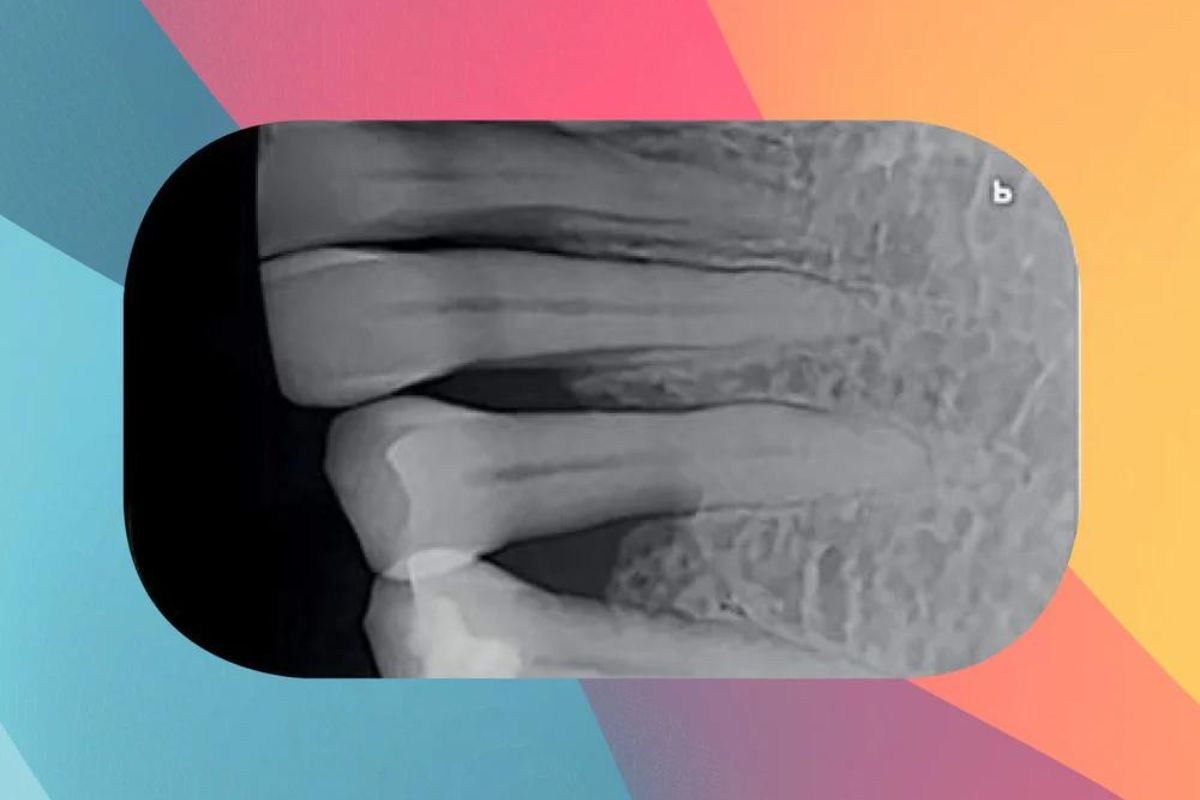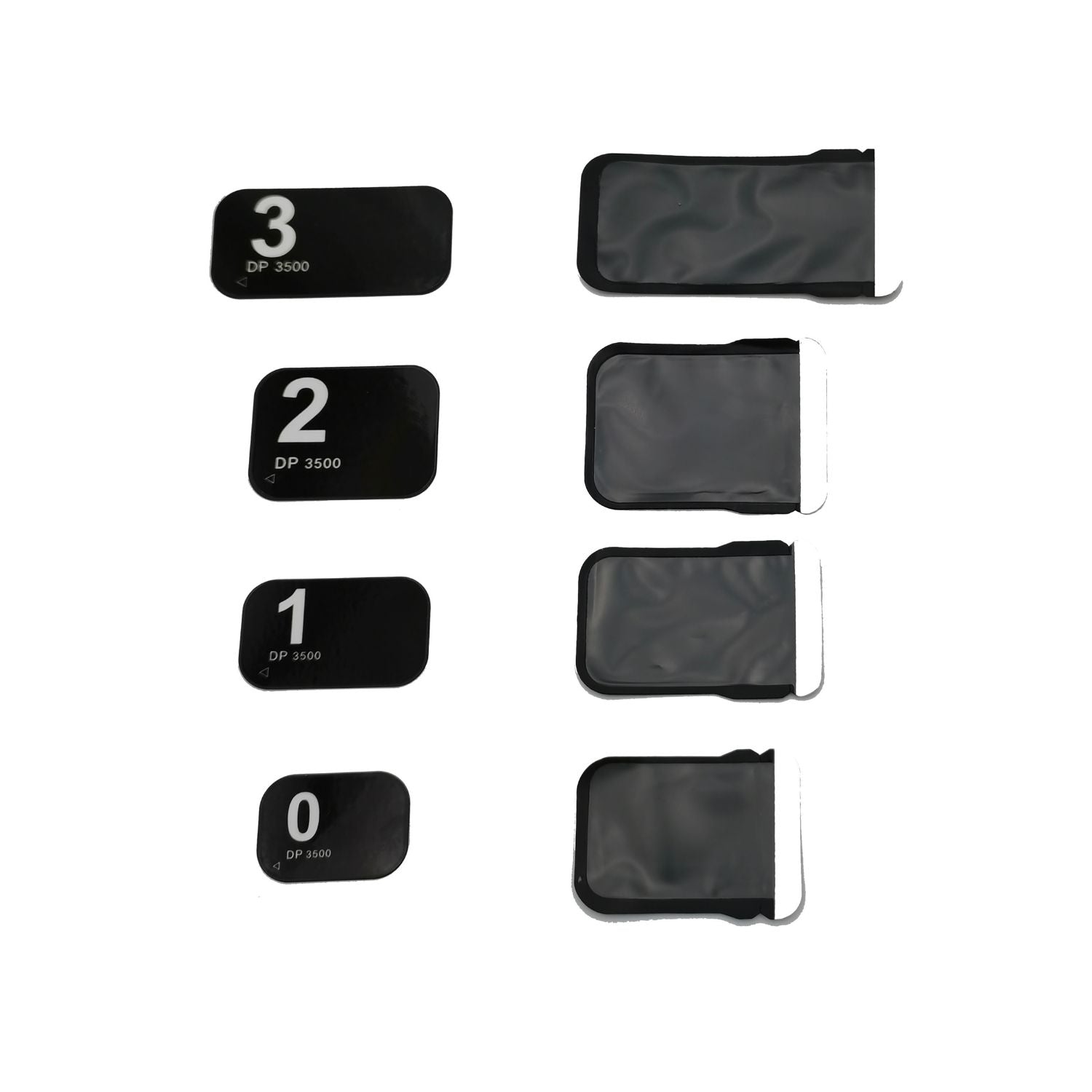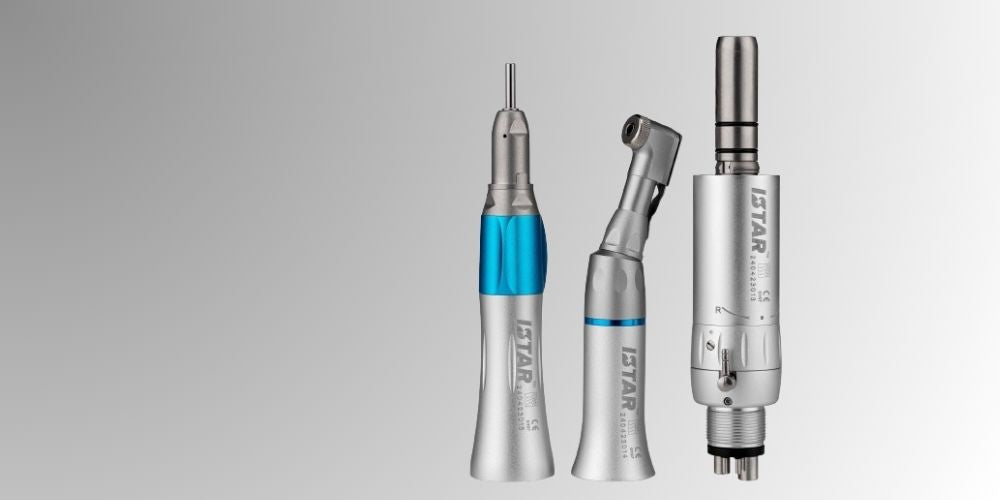
Istar Dental Supply
Our phosphor plates not only meet but exceed the expectations of dental professionals, offering a reliable, efficient, and high-quality imaging solution.
Key Features

Durability and Waterproof
Our phosphor plates are designed to be highly resistant to damage and wear, ensuring they can withstand the rigors of daily dental practice. Additionally, they are waterproof, providing extra protection and longevity, which is particularly useful in the moist environment of the oral cavity.

Superior Image Quality
Our phosphor plates produce exceptionally clear and detailed images, allowing for precise diagnostics. This high resolution helps in identifying even the smallest of dental issues, thereby improving the accuracy and effectiveness of dental treatments.

Wireless Convenience and Stability
The wireless design of our phosphor plates enhances convenience by eliminating the need for cumbersome cables. This not only makes the plates easier to handle and position within the patient’s mouth but also ensures more stable and consistent imaging results, reducing the likelihood of retakes and improving workflow efficiency.

Affordable and Certified
We offer our phosphor plates at competitive prices, making advanced dental imaging technology accessible without breaking the bank. Moreover, our products are certified by both the FDA and CE, ensuring they meet the highest standards of safety and reliability. This certification gives dentists confidence in the quality and compliance of our products, further enhancing their trust and satisfaction.

What is Phosphor Plates Dental?
Phosphor plates dental, also known as photostimulable phosphor (PSP) plates, are flexible imaging plates used in digital dental radiography.
The phosphor plate x ray is coated with a layer of phosphor crystals that can absorb X-ray radiation when exposed to the patient's mouth. After exposure, the plates are scanned with a laser beam, causing the phosphor crystals to emit light. This light is then captured by a sensor, creating a digital image of the patient's teeth and surrounding structures.
phosphor imaging plate offers the advantages of digital imaging, such as immediate image display, but are more flexible and comfortable for patients compared to traditional rigid digital sensors.
Working Principle of Digital Xray Sensor
Phosphor plate dental works by converting X-ray beams into visible light using a scintillator layer.
The light is then turned into electrical charges by a photodiode layer, collected by capacitors, and converted into digital data by an analog-to-digital converter.
This data is processed and displayed as a clear, detailed image on a computer screen for diagnostic purposes.

FAQ of Phosphor Pates Dental
Phosphor plates, used in dental imaging, offer several advantages:
- Flexibility and Comfort: The psp plate dental is thin and flexible, making them more comfortable for patients compared to rigid digital sensors.
- Reusable: Dental digital radiography phosphor plates can be used multiple times, reducing the cost per use and providing long-term savings.
- High-Quality Images: Dental xray plate provides high-resolution images suitable for detailed diagnostic purposes.
- Compatibility: Phosphor plates dental radiography can be used with Dental X Ray Machine, making them a versatile option for dental practices.
- Digital Conversion: PSP plates dental bridge the gap between traditional film and digital sensors, offering an affordable transition to digital imaging without sacrificing quality.
- Efficient Workflow: The Phosphor plate dental x ray can be quickly scanned and digitized, streamlining the imaging process and improving workflow efficiency.
Phosphor plates are used in dental imaging to capture X-ray images of teeth and surrounding structures. Here’s how they are typically used:
- Preparation: The phosphor plate dental radiography is placed inside a protective cover to prevent contamination and damage during the imaging process.
- Positioning: The phosphor plate dental x rays is carefully positioned in the patient's mouth, similar to how traditional X-ray film is placed. The dentist or dental assistant ensures it is correctly aligned to capture the desired area.
- X-ray Exposure: The dental X-ray machine is activated, and X-rays pass through the patient’s mouth, exposing the phosphor plate. The plate absorbs the X-rays and stores the energy.
- Scanning: After exposure, the phosphor plate is removed from the patient’s mouth and inserted into a PSP Scanner. The scanner uses a laser to stimulate the phosphor crystals on the plate, causing them to emit light.
- Image Capture: The emitted light is captured by a sensor in the scanner and converted into a digital image. This image is then processed and displayed on a computer screen.
- Image Analysis: The digital image can be adjusted for contrast, brightness, and other parameters to enhance diagnostic accuracy. Dentists can analyze the image to identify dental issues such as cavities, bone loss, and other abnormalities.
- Reuse: Once the image is captured, the phosphor plate can be erased and reused for future X-ray procedures. The erasing process typically involves exposing the plate to bright light to clear the stored image.
Phosphor plates provide a bridge between traditional film and fully digital systems, offering the advantages of digital imaging while maintaining the comfort and familiarity of film-based techniques.
Flexibility and Comfort:
- Phosphor Plates: These are thin and flexible, making them more comfortable for patients, especially for those with small or sensitive mouths.
- X-ray Sensors: Generally more rigid, which can sometimes be less comfortable for patients.
Image Processing:
- Phosphor Plates: After exposure, they need use PSP scanner to convert the stored energy into a digital image.
- X-ray Sensors: Provide instant digital images immediately after exposure without needing additional processing.
Reusability and Durability:
- Phosphor Plates: Can be reused multiple times, but are generally more prone to scratches and damage over time compared to sensors.
- X-ray Sensors: Also reusable, often more durable and less prone to physical damage.
Initial and Ongoing Costs:
- Phosphor Plates: Lower initial cost compared to digital sensors, but ongoing costs may include the need for frequent replacement of plates and the use of a PSP scanner.
- X-ray Sensors: Higher initial cost but lower ongoing costs due to the durability and lack of need for additional equipment like a scanner.
Workflow Efficiency:
- Phosphor Plates: Slightly longer workflow due to the need for scanning after exposure.
- X-ray Sensors: More efficient with instant image availability, reducing the time needed for imaging and diagnosis.
Image Quality:
- Phosphor Plates: Provide high-quality images suitable for most diagnostic purposes, though sometimes perceived as slightly lower in resolution compared to dental x ray sensors( RVG sensors).
- X-ray Sensors: Typically offer the highest image quality and resolution, which can be critical for detailed diagnostics.
Technology and Compatibility:
- Phosphor Plates: Compatible with Dental X Ray Machine, making them a good transitional technology for practices moving from film to digital.
- X-ray Sensors: Require compatible digital X-ray systems but integrate seamlessly with modern dental practice management software.
Environmental Impact:
- Phosphor Plates: More eco-friendly compared to traditional film as they eliminate the need for chemical processing.
- X-ray Sensors: Even more eco-friendly due to their long life span and the elimination of both chemical processing and the frequent replacement of imaging plates.
Summary
Phosphor Plates are ideal for practices looking for a cost-effective, comfortable, and flexible imaging solution, providing a good transition from traditional film to digital without a high initial investment. They are especially suitable for pediatric or sensitive patients due to their comfort.
Dental X-ray Sensors, on the other hand, offer immediate image availability, superior image quality, and improved workflow efficiency. They are best for practices seeking the most advanced imaging technology with instant digital results, despite a higher initial cost. These sensors are particularly beneficial in high-volume practices where efficiency and image quality are paramount.
Any question?
If we still haven't answered your question, you can contact us below and we will get back to you as soon as possible.





